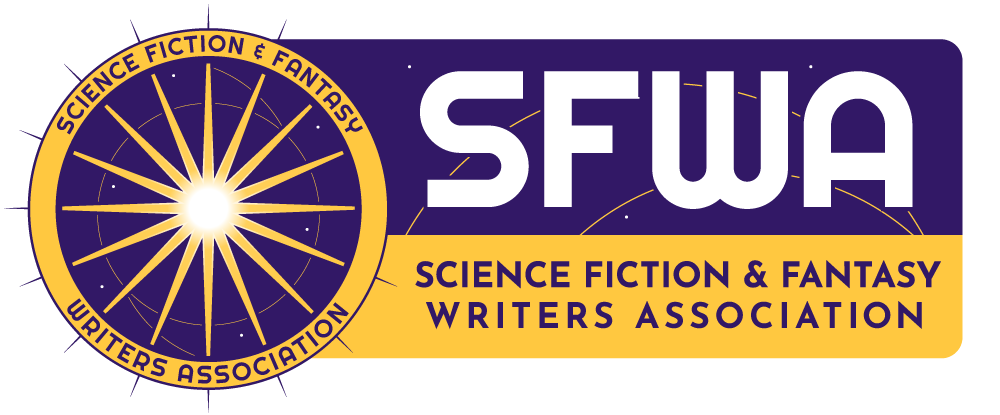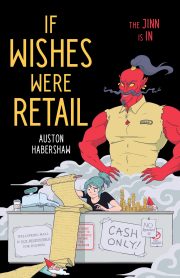Connecting with an Artist Is a Big Part of the Storytelling in Comics
by Jessica Maison
If only there was an app for creator hook-ups, writers would all find the perfect artists and live happily ever after creating amazing comics. That’s how these apps are designed to work. Realistically, a writer would get too many swipe-rights from the wrong ones and a bunch of awkward DMs, leaving their script alone without a match. Fortunately, there are better ways to find an artist. Before a writer starts this process, it’s important that they approach the search with the right mindset.
From the meet-cute to the printed comic, a writer’s approach to forming a relationship with an artist should be guided by the comic script’s function. A script is the tool to effectively communicate to the artist what needs to be drawn to tell the story. The reader is not the writer’s direct audience in comics—that is the illustrator. So, if a writer prefers to tell a story directly to the reader (totally understandable), the writer should stick to prose. They’ll be happier, and so will the readers. Comics are a different beast and must be handled with other rules of engagement. Think of the script as a spell cast over the creative team that then produces magic for the reader. This mindset will set the writer up for success when approaching artists and writing for them.
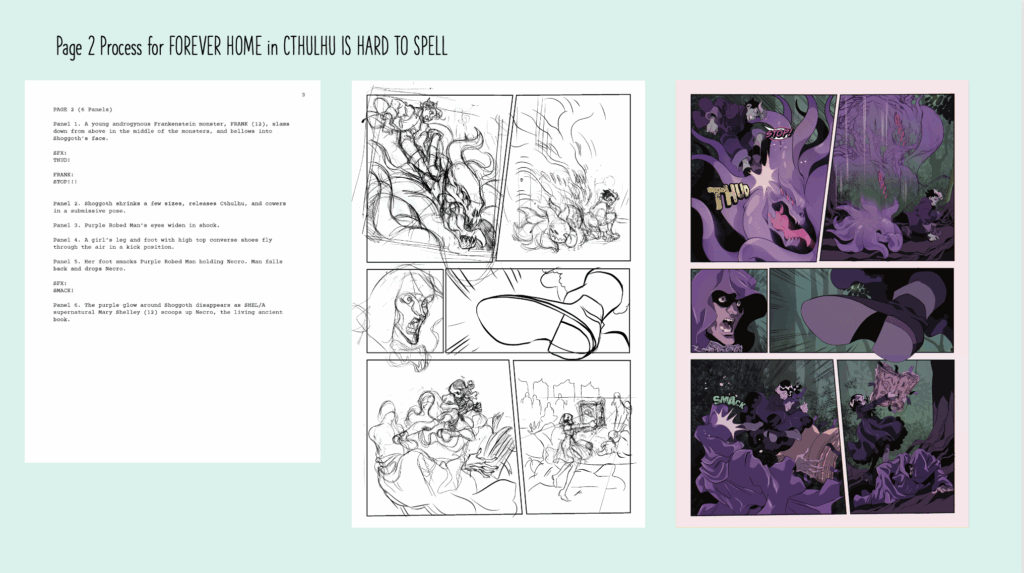
Process pages from Forever Home published in Cthulhu Is Hard to Spell: Battle Royale anthology. Script by Jessica Maison, sketch and colors by Anna Wieszczyk. Letters by Joel Rodriguez.
Finding the Right Artist for Your Script
Finding an artist for your story is stressful because it is so essential. An agency or publisher may pair up a writer and an artist in traditional publishing. However, that has been changing over the last few years. Publishers and agents increasingly want solo cartoonists or an already established team. In independent publishing, this team has, more often than not, formed on its own, and usually, the writer initiates this partnership.
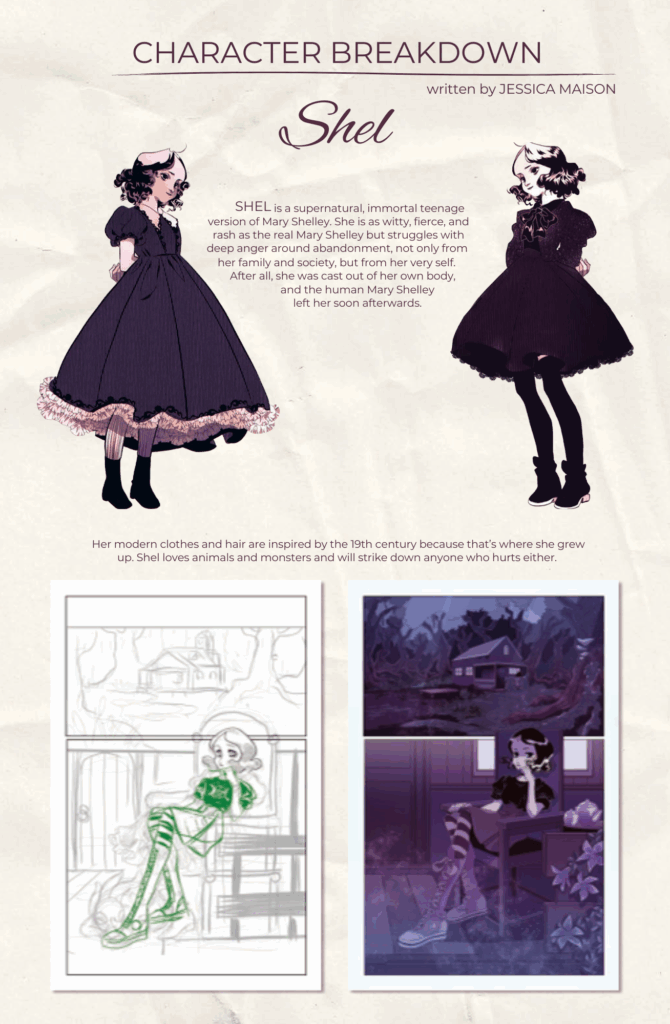
Shel character design for Mary Shelley’s School for Monsters, written by Jessica Maison and illustrated by Anna Wieszczyk.
When preparing to begin, the writer needs to remember that the artist’s style must match their script’s tone and genre. This is one of the most important things to get right in this process. If the writer pairs up with the wrong type of artist or vice versa, the story will fall flat, and the comic will fail, no matter how well it is written. So, if it’s a dystopian comic script, the writer should look for an artist whose style and body of work engage those types of readers and fans. That rule applies to any genre. In comics, art excites the readers, so try to pick an artist who excites the readers of the script’s genre. As versatile as many artists are, it is still a good rule of thumb to pitch to artists who have done projects in or adjacent to the script world with an established fan base.
Discovering artists is rewarding but often complicated. First, the writer needs to read as many graphic novels and comics in the script’s genre as possible, both from the big publishers and the indie ones. Libraries, local comic shops, Webtoons, Tapas, GlobalComix, Cara, and comic conventions are all places to discover these books and artists. Based on that research, the writer then lists artists who would realistically engage in the script and with them. Through this process, the writer should also work to establish themselves in the comics community and build trust with other creators by participating in anthologies, online groups, crowdfunding sites, and events. Finding the right artist will be difficult without engaging with the comics community.
The number one thing to remember when approaching artists is that they expect to get paid. Nothing will hurt a writer’s reputation more than expecting people to draw their story for free. It takes an artist hours to draw a comics page well, so it is disrespectful to ask an artist to illustrate for free, no matter how genius the writer or how amazing the script is. Never approach an artist with that expectation. Rather, when preparing to approach artists, create a budget that can be shared with them when they ask for it.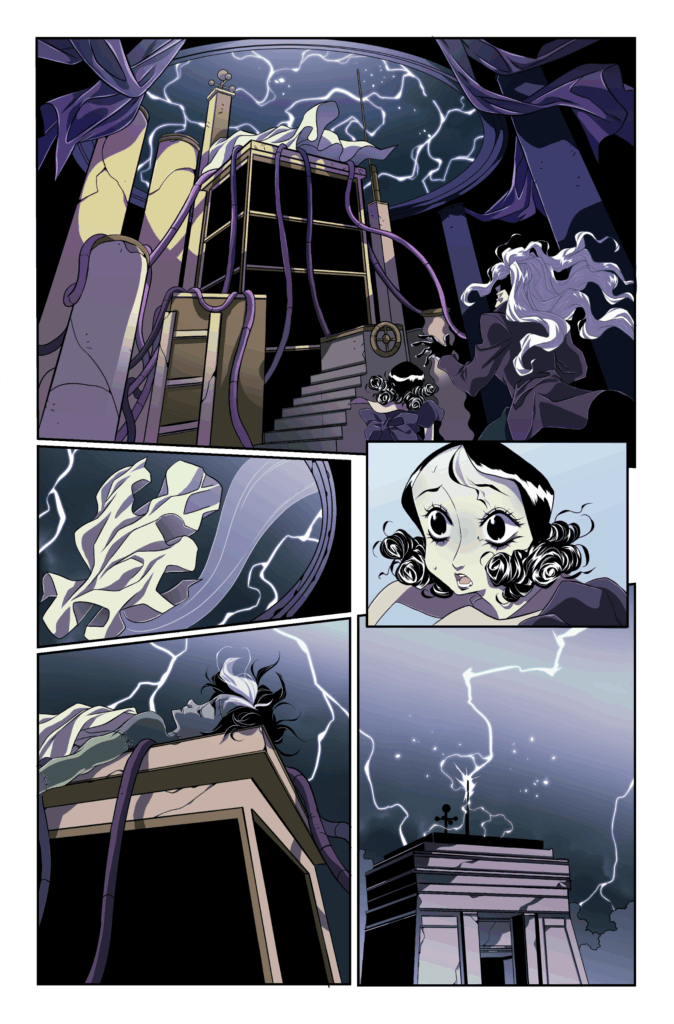
Inks by Anna Wieszczyk from Mary Shelley’s School for Monsters series.
Collaborating with an Artist
Taking baby steps with this new collaborator is important, given the money and time involved. It’s risky to jump into a 200-page graphic novel with an artist after one great meeting. Taking the extra time to get to know the artist and how they work is well worth it. Review their complete portfolio and body of work. Reach out to their references to discover more about their process and ability to meet deadlines.
Another best practice is to start small. For example, a writer can ask an artist to do character designs with compensation for the artist and a contract to protect both collaborators. This helps determine if the team works well together and whether the artist’s vision for the characters is the same as what the writer imagines. If that step goes well, the team graduates to a short project like the book’s opening or first issue, which would be helpful when pitching the project to publishers. Anthologies are also great for this method. Find an anthology in the script’s genre and ask the artist if they want to submit a story together. The writer may still need to pay the artist their page rate, or the artist may agree to do it for what the anthology pays, or just because they also want to have a story published in the anthology.
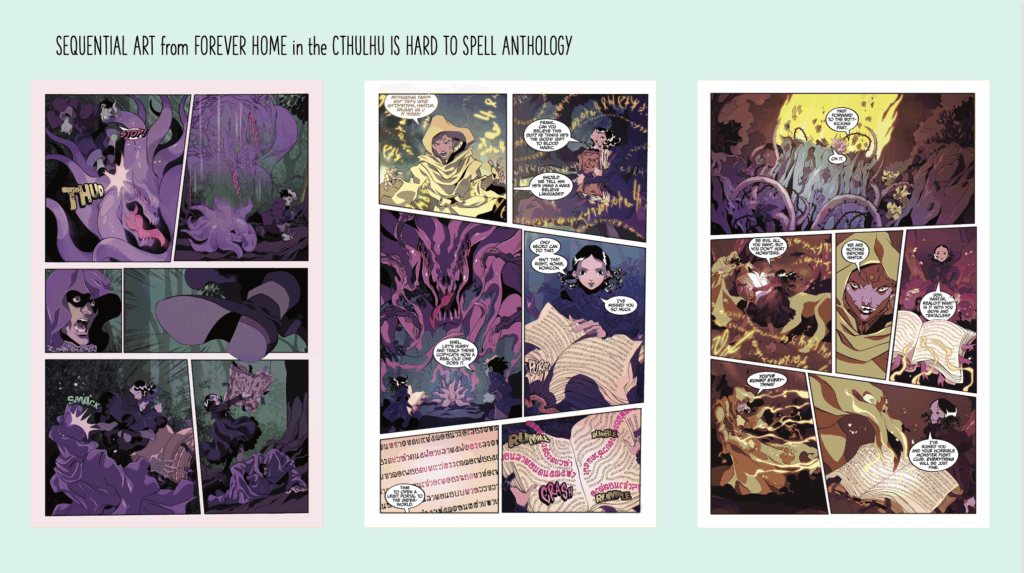 Sequential art for Forever Home by Jessica Maison and Anna Wieszczyk, published in the Cthulhu is Hard to Spell: Battle Royale anthology.
Sequential art for Forever Home by Jessica Maison and Anna Wieszczyk, published in the Cthulhu is Hard to Spell: Battle Royale anthology.
At this point, a colorist and letterer may be brought onto the project, depending on the illustrator you hire. Some illustrators can pencil, ink, color, and letter a book. The all-in-one artist can simplify the process, but it is also way slower. More often, the illustrator will pencil and ink the comic’s pages, and a colorist and letterer will be necessary to complete them. Be sure to take the same time and care in getting to know these artists as you did with the illustrator.
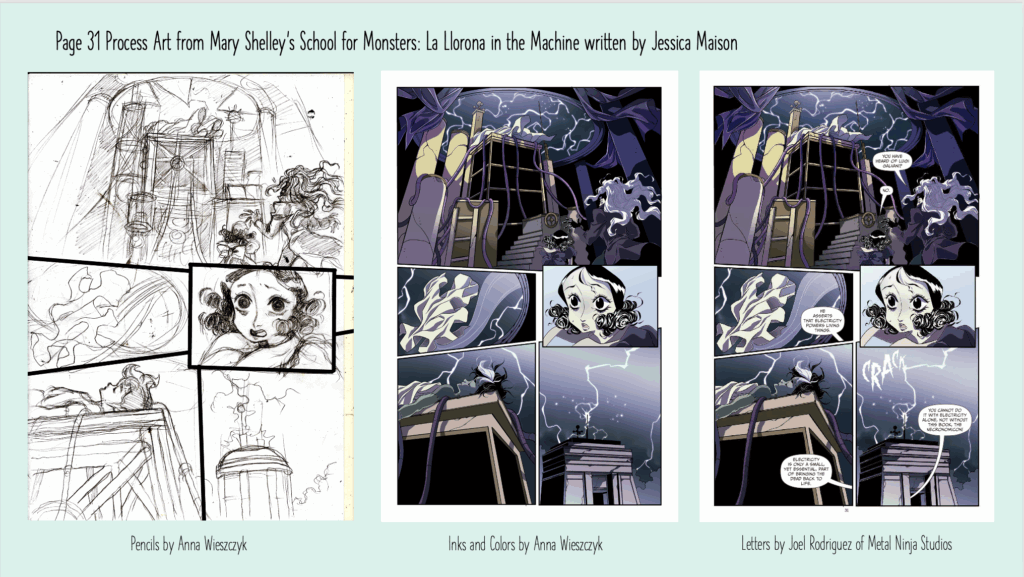 Process art from Mary Shelley’s School for Monsters: La Llorona in the Machine, words by Jessica Maison, art by Anna Wieszczyk, and lettering by Joel Rodriguez.
Process art from Mary Shelley’s School for Monsters: La Llorona in the Machine, words by Jessica Maison, art by Anna Wieszczyk, and lettering by Joel Rodriguez.
Finally, establish an agreement that works for all parties, submit, and do the work together. These are not the only ways to connect with an artist or team of artists, but they are solid pathways to establishing a professional relationship without getting burned, while also pushing the project forward and/or expanding the team’s body of work. Once a creative relationship built on trust and experience has been established, it will be time to draw up the contract and dive into the more significant book.
When it all comes together, it’s magic, but it first takes diligence and patience to form those essential relationships with the comics’ other storytellers.
Explore more articles in THE COMICS PANEL series

Jessica Maison is a sci-fi, fantasy, and horror author, screenwriter, and comic creator. Plastic Girl is her coming-of-age ecopunk YA novel series set in a climate apocalypse. She is the writer of the award-winning graphic novel series Mary Shelley’s School for Monsters, and her short comics have been featured in anthologies such as Cthulhu is Hard to Spell and Nightmare Theater. She is an IBPA Benjamin Franklin Gold Award winner and Foreword INDIES Award nominee. Her sci-fi speculative short stories have been published by Terraform, and she is the founder of Wicked Tree Press.
